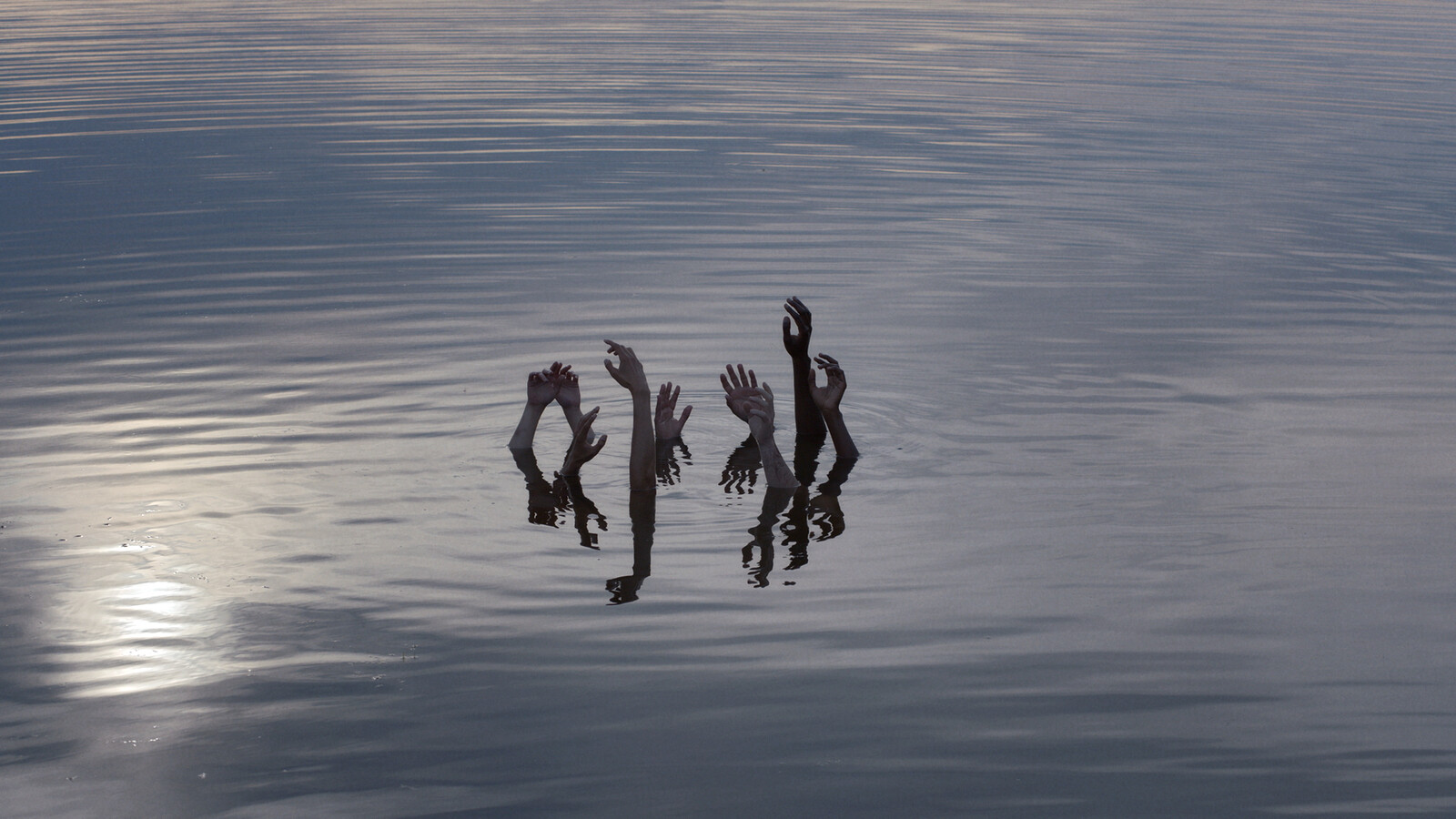April 27–July 30, 2023
Leipziger Strasse 60
10117 Berlin
Germany
Hours: Saturday–Sunday 12–6pm
info@jsfoundation.art
The first institutional solo exhibition by the collective (LA)HORDE—Marine Brutti, Jonathan Debrouwer, Arthur Harel—features a selection of video installations that come out of their choreographic practice rooted in ritual, subcultures, and the everyday. Working together since 2013, (LA)HORDE have made a name for themselves by expanding the boundaries of classical dance. They have been the directors of the Ballet National de Marseille since 2019, where they have worked with various choreographers including Lucinda Childs, Cecilia Bengolea and François Chaignaud, and Oona Doherty.
Their approach focuses on understanding how bodies are represented in public space, via social networks, and on the stage, which they consider to be a political place of intersecting choreographic languages. Through dance, or more generally, through the body in motion, they examine individual and communal gestures of transgression and resistance by performing protest, inserting themselves into festival crowds, and inviting nonprofessionals to take center stage. In doing so, (LA)HORDE seek to unearth the power that resides in our bodies, creating experiences that resonate on deeply emotional and psychological levels.
(LA)HORDE’s practice encourages viewers to consider how, over the last fifteen years, our movements and behaviors have drastically shifted due to the ubiquity of phones, surveillance cameras, and social media. We have adapted to performing for the camera in both private and public spaces, whether or not we give consent. At the same time, widespread access to recording technology and mass distribution channels has expanded the possibilities of performance and dance through new modes of expression and identification, defined by communal codes that in some cases lead to political dissent. To describe these modes, (LA)HORDE have coined the term “post-internet dance.”
During the opening as well as on Thursday, 27 April, 6–10pm, the exhibition will be activated by the performance To Da Bone.
Curator: Lisa Long
Assistant Curator: Line Ajan
About (LA)HORDE
(LA)HORDE is a multidisciplinary collective founded in 2013 by the artists Marine Brutti, Jonathan Debrouwer, and Arthur Harel. Through videos and performances (Novaciéries, 2015; The Master’s Tools, 2017; Bondy, 2017; Cultes, 2019) and choreographic pieces (To Da Bone, 2017; Marry Me in Bassiani, 2019; Room With A View, 2020), (LA)HORDE question the political significance of dance and map the choreographic forms of popular uprisings, whether massive or isolated, from raves to traditional dances and jumpstyle.
Since 2019, they have been the directors of the Ballet National de Marseille. Their productions have been shown across Europe at the Théâtre de la Ville in Paris, the 15th International Festival of Contemporary Dance in Venice, and De Singel in Antwerp, among others. In July of 2023, (LA)HORDE will premiere a new choreography at Kampnagel in Hamburg, which will travel to Berlin as part of Tanz im August. They have also collaborated with musicians such as Rone and Sam Smith; brands such as Burberry and Isabel Marant; director Spike Jonze, or the science fiction writer Alain Damasio.
(LA)HORDE’s performance and video installations have been exhibited at Centre Pompidou, Palais de Tokyo, and Fondation Cartier in Paris and HangarBicocca in Milan. Their video installation Cultes is now part of the permanent collection of the Musée d’Art Moderne de la Ville de Paris.
About the Julia Stoschek Foundation
The Julia Stoschek Foundation is a non-profit organization dedicated to the public presentation, advancement, conservation, and scholarship of time-based art. With two public exhibition spaces located in Berlin and Düsseldorf that feature cutting-edge media and performance practices, the foundation stewards one of the world’s most comprehensive private collections of time-based art.
With over 900 artworks by 300 artists from around the globe, the Julia Stoschek Foundation spans video, film, single- and multi-channel moving image installation, multimedia environments, performance, sound, and virtual reality. Photography, sculpture, and painting supplement its time-based emphasis. The collection’s contemporary focus is rooted in artists’ moving image experiments from the 1960s and ’70s.

